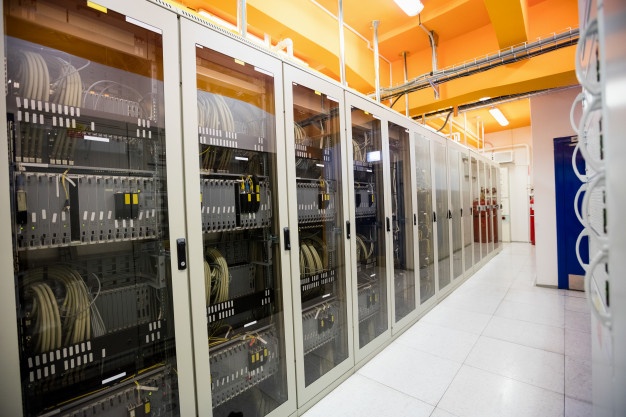A rack mount server is a great way to maximize your shelf space by packaging a lot of servers into a small space. Rackmount servers are generally easier for administrators to handle as a result of proximity, modularity and better cable management. Lockable rack cabinet’s doors and steel host front panels provide an additional amount of physical security. Additionally, rack unit made servers are far better able to maintain the server components trendy than traditional tower form factor. Industry standard 19-inch racks will allow you to easily enlarge your business up without taking up more valuable floor space.
There’s a lot of thought that needs to enter which dimension rack server is best for your job. Both current requirements and future growth plans need to be taken into account to ensure your server remains in charge of your future.
Both big and tiny projects can be constructed on the 1U server platform using any of the refurbished servers. A sensible quantity of storage can fit within a 1U, processing power has no limits, and some versions even allow up to 2 PCI-Express cards. Contemporary pc hardware uses much less power than it ever has in the past, which means less heat generation. A few 1U servers to still produce some acoustic sound, but is nowhere near the level of needing earmuffs like the previous days. The only reason to go up in size is for additional expansion options.
2U versions allow for several”low-profile” PCI-Express cards while maintaining a compact form factor along with providing some extra storage space. In the event the plan is to utilize several full height cards, then 3U or 4U servers should be the focus. The 4U versions are extremely popular and offer flexible options.
Bringing IT in-house and setting up committed on-premises servers could be intimidating for a small organization, especially given the current focus on internet services. Moreover, resources designed to help tend to assume a medium-sized or business installation, which might not always work well for establishing a small server space or possibly a closet for a branch office.
Having some understanding of these fundamentals, though, establishing your server space for the small business community need not be an arcane procedure. Here are some tips for getting started.
Rack-mount gear makes sense
It’s not unusual for small businesses to start operation by stacking server hardware and network appliances on a shelf or desk. Though such a setup is inexpensive, the heap of gear always develops into an unmanageable mess with the growth of the company. Exposed gear can also be completely available to physical tampering and is a ticking time bomb for accidents like coffee spills, dust as well as employees tripping over wires.
But, rack-mount gear is designed especially to properly house this type of hardware. While these tend to be pricier than their non-rack-mount equivalents, it is arguable that being simpler to handle far surpasses the cost premium. In addition, drawers and shelves designed for mounting onto the server stand are widely accessible; these let racks work with non-rack bracket appliances as necessary.
There’s a server rack for all seasons
Before obtaining the server rack, it’s very good to first understand its fundamental characteristics.
Consider, also, the width and depth of the server stand, which is usually considered to be 19 inches to the former and 600mm into 1,000mm for the latter. Some server racks come with adjustable rear brackets, though most rack mount servers include flexible mounting kit that can be utilized as long as there is sufficient thickness for your server.
The most typical product server rack now is probably the four-post rack built to maintain servers and appliances 19 inches wide. Other options exist, including desktop versions that vary from 5U to 20U. (These dimensions don’t pertain to the external dimension of the rack; that varies depending on design.) Optional caster wheels might be useful for restricted freedom.
Two options for space-constrained locations are open frame racks or small wall-mounted cabinets. Keep in mind, though, that open frame racks may have special mounting requirements, such as being bolting to the floor, whereas wall-mounted cabinets might not be acceptable for loads heavier than network switches or just a few servers.













